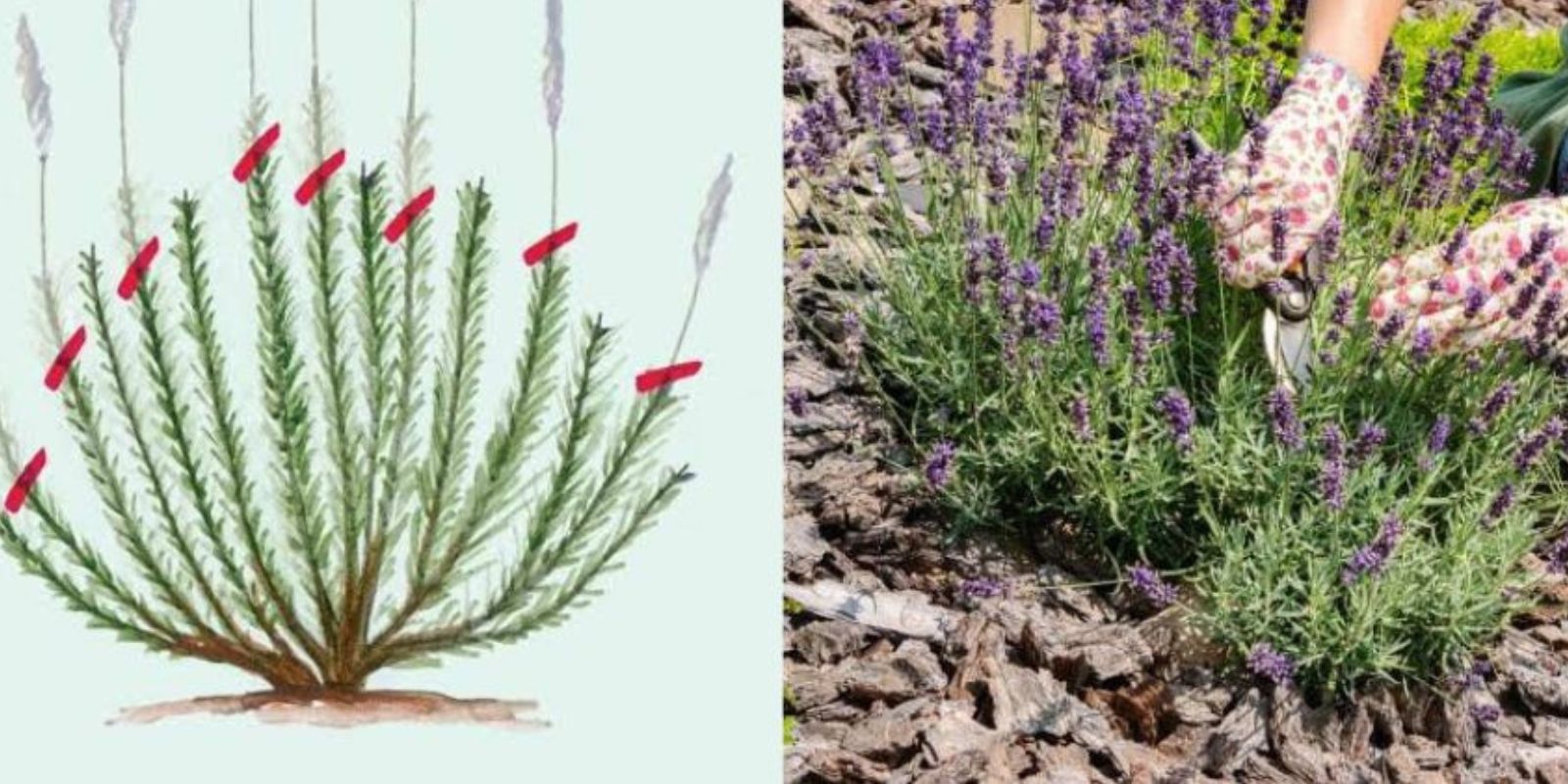Lavender, known for its soothing fragrance and beautiful blooms, is a favorite in gardens around the world. However, to keep this hardy plant thriving and blooming year after year, proper pruning is essential. Whether you’re growing lavender for its aroma, as a pollinator-friendly plant, or for crafting purposes, this guide will teach you the secrets to successful pruning and care.
Why Prune Lavender?
Pruning lavender is more than just trimming for aesthetics. It serves several important purposes:
- Promotes Healthy Growth: Regular pruning encourages new growth and prevents the plant from becoming woody and unproductive.
- Extends Lifespan: Proper pruning increases the longevity of your lavender plant.
- Improves Flower Production: Well-pruned lavender produces more vibrant and abundant blooms.
- Maintains Shape: Pruning keeps your lavender neat, compact, and visually appealing in the garden.
When to Prune Lavender?
Timing is crucial when it comes to pruning lavender. Prune at the right time to ensure healthy regrowth and optimal flowering:
- Main Pruning (Late Summer/Early Fall):
- Best done from late August to early September after the flowering season ends.
- Helps prepare the plant for dormancy and prevents overgrowth.
- Shaping Pruning (Spring):
- In early spring, give the plant a light trim to shape it and remove any winter damage.
- Avoid cutting too early, as frost can harm fresh cuts.
How to Prune Lavender?
Follow these easy steps for a successful pruning session:
1. Inspect Your Plant
- Look for dead or diseased branches and remove them first.
- Identify the green wood (newer growth) and avoid cutting into old, woody stems.
2. Trim the Green Growth
- Cut back the plant by one-third of its height.
- Always leave some green foliage; lavender cannot regrow from bare wood.
3. Avoid Drastic Cuts
- Never perform a radical cut down to the base. This can damage the plant and prevent regrowth.
4. Shape the Plant
- Maintain a rounded, mound-like shape for better air circulation and a tidy appearance.
Tools to Use for Pruning Lavender
Using the right tools is essential for clean cuts and a healthy plant:
- Sharp Garden Shears: Ensure they’re clean and sharp to make precise cuts.
- Disinfectant Spray: Clean tools between cuts to avoid spreading diseases.
Post-Pruning Lavender Care
Taking care of your lavender after pruning helps it recover and thrive:
1. Soil and Watering
- Lavender prefers well-draining soil to prevent root rot.
- Water sparingly, especially after pruning, as lavender is drought-tolerant.
2. Fertilizer
- Avoid fertilizing lavender after pruning. Excess nutrients can encourage leggy growth.
3. Mulching
- Add a thin layer of mulch around the base to retain moisture and regulate temperature.
4. Monitor for Pests
- Watch for signs of pests like aphids or fungal diseases. Early intervention prevents damage.
Common Mistakes to Avoid When Pruning Lavender
- Cutting into Woody Stems: Lavender cannot regrow from old, woody growth. Always stick to green stems.
- Over-Pruning: Cutting back more than one-third can shock the plant and reduce its ability to recover.
- Pruning at the Wrong Time: Avoid pruning in late fall or early winter, as frost can damage the plant.
- Ignoring Deadheading: Failing to remove spent flowers can lead to untidy plants and reduced blooms.
Types of Lavender and Their Pruning Needs
Different varieties of lavender require slightly different pruning techniques:
- English Lavender (Lavandula angustifolia):
- Hardy and easy to prune. Requires two light prunings annually.
- French Lavender (Lavandula dentata):
- Grows faster and needs more frequent pruning to maintain shape.
- Spanish Lavender (Lavandula stoechas):
- Requires minimal pruning; focus on deadheading spent blooms.
Lavender Pruning FAQ
Q: Can I prune lavender in winter?
A: No, winter pruning can damage the plant. Stick to late summer or early spring.
Q: How often should I prune lavender?
A: Prune twice a year – once after flowering and once in early spring for shaping.
Q: What happens if I don’t prune my lavender?
A: The plant may become woody, overgrown, and less productive over time.
The Benefits of Pruning Lavender
When you prune your lavender correctly, you’ll enjoy:
- Healthier plants that last longer.
- A garden filled with vibrant blooms and soothing fragrances.
- Pollinator-friendly flowers that attract bees and butterflies.
Conclusion
Pruning lavender is simple yet essential for keeping your plants healthy, beautiful, and blooming year after year. With the right timing, tools, and techniques, you can maintain a thriving lavender garden that enhances both your outdoor space and your well-being.
Do you have lavender care tips to share? Let us know in the comments below! 🌸

